At 10:30pm on October 28, 1746, a massive earthquake struck the city of Lima, Peru. Sleepy residents spilled onto the cobblestone streets, seeking safety, as tremors grew more violent by the second. In under four minutes, the Spanish colonial capital was decimated. Only 25 of the city’s 3,000 homes were left standing. Almost every church and business was reduced to a heap of stone, and those that remained suffered significant damage. Over a thousand souls were lost beneath the rubble, many before they had the chance to get out of bed.
As the sun rose the next morning, survivors were surrounded by extraordinary devastation. Lacking a modern understanding of geological events, they struggled to make sense of their suffering. With no time wasted (and no regard for the whims of tectonic plates), church officials pointed the finger at Lima’s hedonistic, irreverent populace — particularly its female contingent. Like Eve to the Garden of Eden, women had brought about Lima’s destruction.
By 1746, the women of Lima had been scandalizing the city’s male faction for almost 200 years. In a colonial society rife with corruption, misconduct, and political unrest, Lima’s women were routinely targeted by governmental and ecclesial authorities — not for their participation in political and mercantile tumult, but for their style of dress.
If this sounds a bit familiar, that’s because it is. Legislative uproar over women’s clothing is not unique to colonial Lima. In ancient Athens, a woman’s clothes could be confiscated or publicly removed if they were deemed too ostentatious or immodest. In medieval France, sex workers were forbidden from wearing garments associated with “honest”, bourgeois women, lest the two groups be confused. To this day, countries around the world impose female dress codes in order to demonstrate women’s modesty, respectability, or assimilation into a given culture.
For centuries, women’s clothing has been regulated under the guise of maintaining public order, and historically a woman’s deviation from this norm resulted in damning legal or societal consequences. For the women of colonial Lima, however, the story is different. For 300 years, the women of Lima led a collective resistance against their society’s sartorial limitations, allowing for an unprecedented level of freedom.
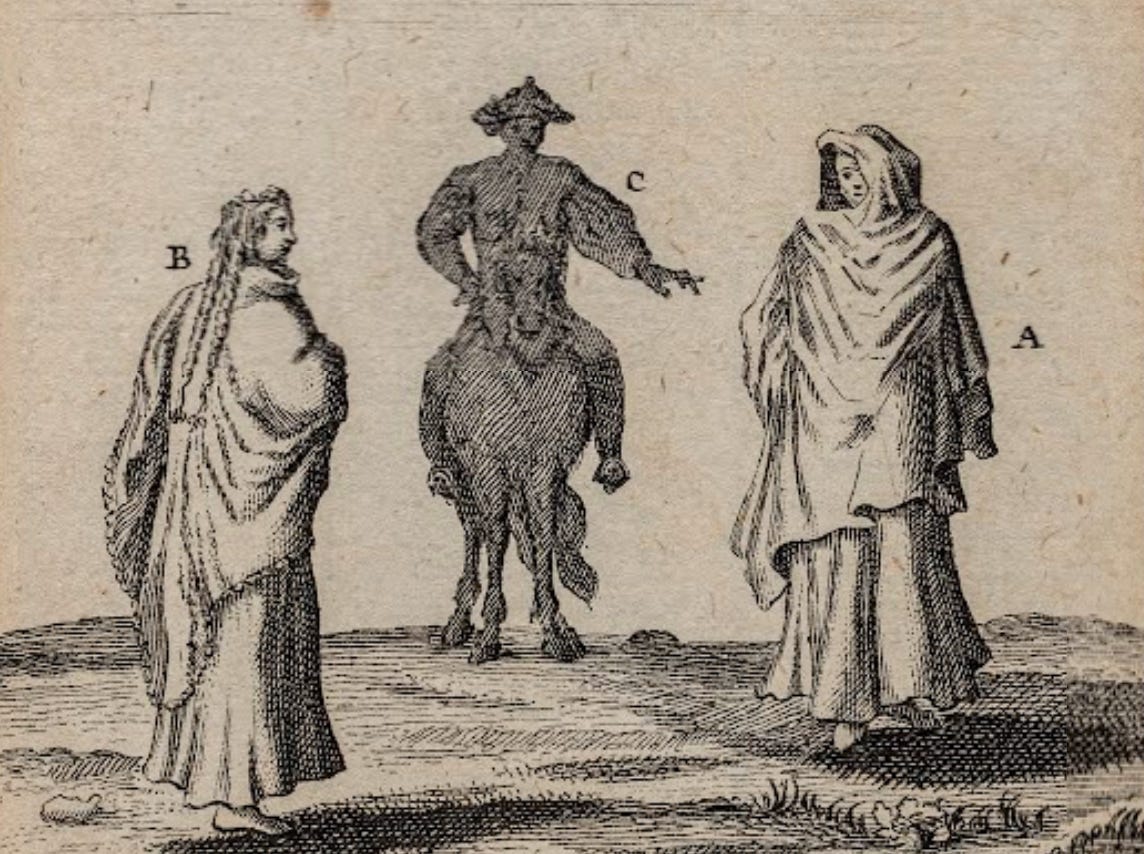
Though there is some debate among historians, our story very likely begins with a 15th century Muslim influence. Peruvian-Spanish historian Antonio de León Pinelo suggested that when the Spanish crown prohibited the use of traditional Muslim veils in the 1490s, Muslim women in Spain were forced to adapt Castilian veils. Accounts from the time reference Muslim women’s practice of shrouding their faces behind dark veils, leaving only one eye visible. Spanish women later appropriated this style, and historical records demonstrate its popularity in a handful of Spanish towns by the end of the 16th century. Somewhere around 1580, the practice crossed the Atlantic, where it made history in Lima, Peru.

For three centuries, women in Lima obscured all but one eye behind a dark shawl, or manto, whenever they left their homes. These women were known as “las tapadas limeñas”, or “the covered women of Lima”. This practice of concealment was so widespread that when a limeña1 stepped out in her signature manto, she walked among a mass of identically dressed ladies. In public, she became completely anonymous.
To understand the significance of las tapadas limeñas’ anonymity, we must also understand the context from which it emerged. In 16th century Lima, women were expected to remain on the fringes of society. They existed firmly under the authority of their fathers and, later, their husbands. Women at this time experienced very little in the way of personal freedoms, and compounding this patriarchal subjection were the very salient issues of race and class.
Colonial South America was a melting pot of racial identities — white, black, indigenous, asian, mixed — and each corresponded to a place on the social hierarchy. Arguably a little nit-picky, the Spanish viceroyalty went so far as to record every possible race mixture in the Americas, matching each with its own caste. In total, they counted sixteen races, with white Spaniards occupying the most noble rungs of society.
These already vague race divisions were blurred further by the fashions of las tapadas limeñas. Beneath their veils, las limeñas could blend into a faceless collective. They moved freely about the city, as men did, all the while eluding the watchful eyes of fathers, brothers, and husbands. They wore their hair loose and eschewed the restrictions of a corset. They chatted and flirted with whomever they pleased. There are even accounts of the limeñas’ covert influence in politics; it is said that they carried messages during the war, exerted pressure on decision-making, and spread rumors in the interest of Peruvian independence.

All this considered, the men of Lima (especially those in positions of church and state authority) took great umbrage with las tapadas limeñas. Of Lima’s women, one 17th century poet wrote:
“They are insolent vipers that resemble heresy when, covered by the veil, they lose the veil of shame.”
… a touch dramatic, yes, but the crusade against women’s clothing choices was very real. It was argued that the limeñas’ style was a direct offense against God, that it was “unnatural” for fathers and husbands to not recognize their daughters and wives in the street. Beyond that, as one gentleman stated before the Spanish Parliament in 1586, men were at risk of attacking the wife or daughter of a nobleman and putting themselves in great danger — danger they could avoid were they able to differentiate one woman from another in public.2
What frightened men most, it seems, was the possibility of a flirtation with a man dressed as a tapada limeña. Records indicate that encounters of this nature had occurred by the early 17th century, and in Lima’s devout Catholic society, it is certain that any brush with homosexuality or gender fluidity was not to be tolerated.
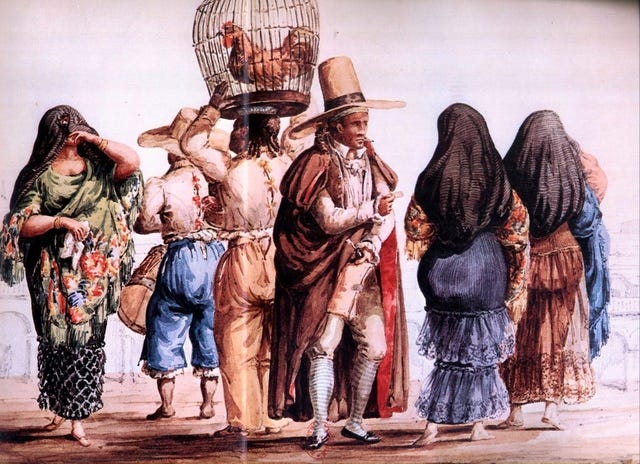
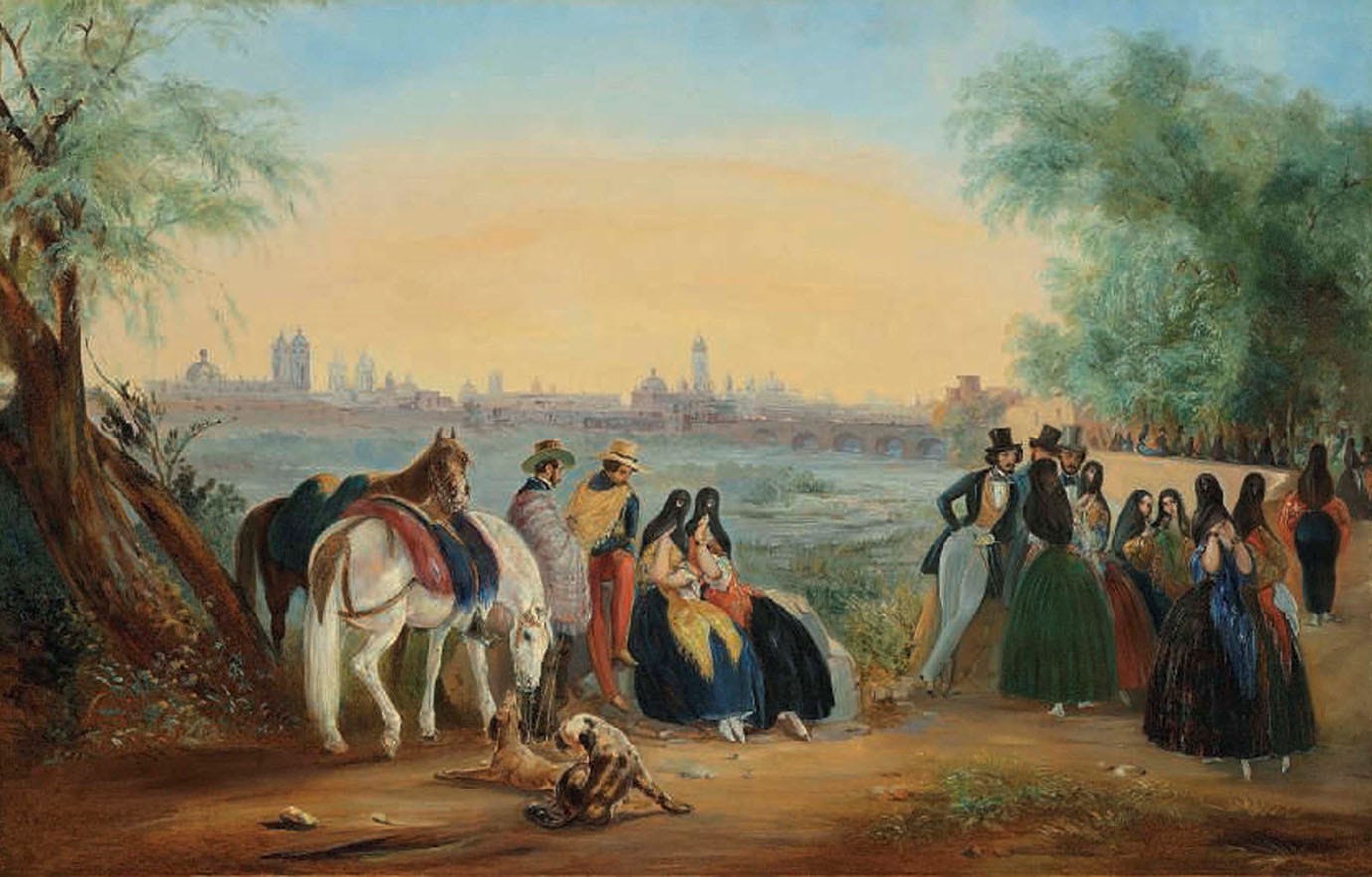
Peruvian viceroys and archbishops alike passed laws to ban the covered styles of las limeñas in 1590, 1593, 1600, 1624 and 1639. In Viceroy Diego Fernández de Córdoba’s 1624 ruling, he outlined the penalties for donning the tapadas attire: noble white women would lose their veil and face 10 days in prison. The sentence for non-white women was tripled; they received 30 days in prison, and repeat offenders were banished from the city.
Fortunately, these laws consistently proved impossible to enforce. The viceroyalty couldn’t very well arrest every woman on the street. Allegedly, when authorities did make serious efforts to curb veiling practices in Lima, the women protested en masse, refusing to perform housework until their sartorial autonomy was guaranteed. In 1609, after countless failed efforts at controlling las tapadas limeñas, Viceroy Juan de Mendoza y Luna complained to King Philip III. He reasoned that if Lima’s men couldn’t stop their wives from donning mantos in public, how was he meant to stop the entire female populace?
As it turns out, he wouldn’t, and neither would any of the viceroys who succeeded him. In fact, las tapadas limeñas would outlast Peru’s colonial occupation altogether. Lima’s women continued to hide their identities in public until the 1860s, when the new French fashions arriving in South America caught their eye3. Still, the legend of las tapadas limeñas lives on today.
Numerous visitors to Peru, including a handful of artists, found themselves enamored with the women of Lima. Las tapadas limeñas inspired painters, poets, photographers, writers, and composers. It is said that Lima’s women were the inspiration for Georges Bizet’s famed opera, Carmen.
Of all the art inspired by limeñas, the words of Flora Tristán stand out the most for me. Tristán was a French activist of Peruvian descent. After she visited Lima in the 1830s, she published an account of her travels, titled Peregrinations of a Pariah. Her work focused on themes of social justice and women’s rights, and she lauded the uninhibited behavior of Lima’s covered women. Enamored by las tapadas limeñas, Tristán wrote: “no hay ningún lugar sobre la tierra donde las mujeres sean mas libres” — “there is no place on Earth where women are more free.”
As always, thanks for reading extracurriculars! For more historical deep dives, oddities, and obscura, consider subscribing below.
For more, check out these resources:
The Met’s collection of watercolors by Pancho Fierro, the Afro-Peruvian artist famous for his colorful reproductions of life and customs in colonial Peru. Many of the images we have of las tapadas limeñas are attributed to Fierro.
This detailed account of Lima’s 1748 earthquake with a comically long title, written by Lozando Pedro in the same year.
What Not To Wear: A Short History Of Regulating Female Dress From Ancient Sparta To The Burkini by Sarah Bond, which goes into more detail about the ways women’s clothing has been controlled throughout history
A Brief History of the Hat Pin by me 👋 , one of my first posts on Substack, recounting the history of another fashion-based symbol of resistance and its controversy during the early 20th century.
LatinoLand: A Portrait of America's Largest and Least Understood Minority by Marie Arana, an emotional deep-dive into the history of Latinos on the American continent. Arana’s first chapter greatly informed this post’s discussion of race in colonial South America. I highly recommend checking this book out!
a woman from Lima
¡pobrecitos! there must be a way to stop this!!
no pun intended






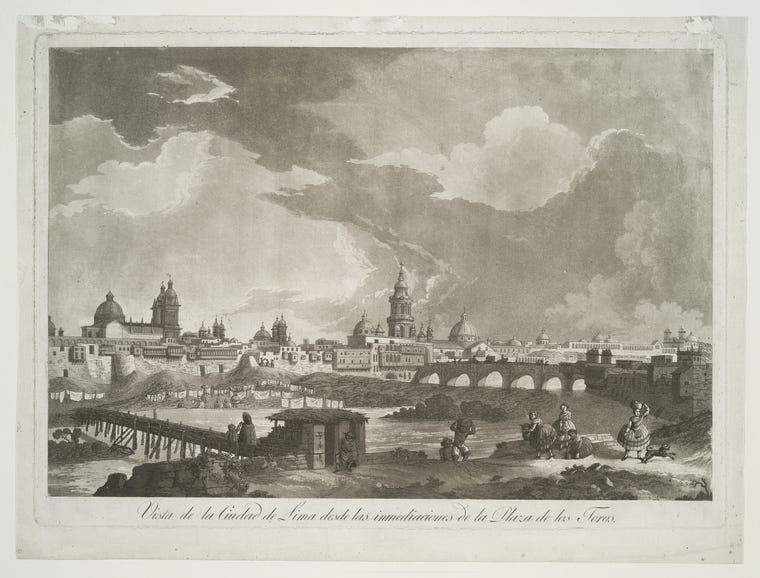
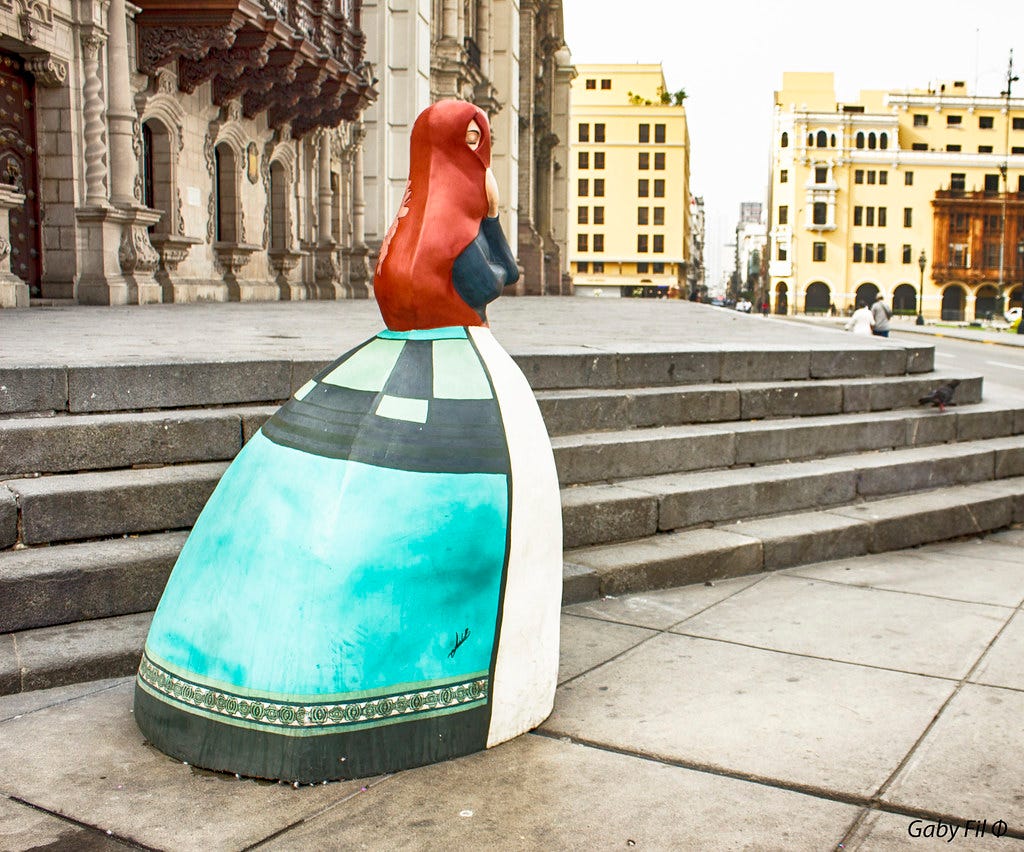
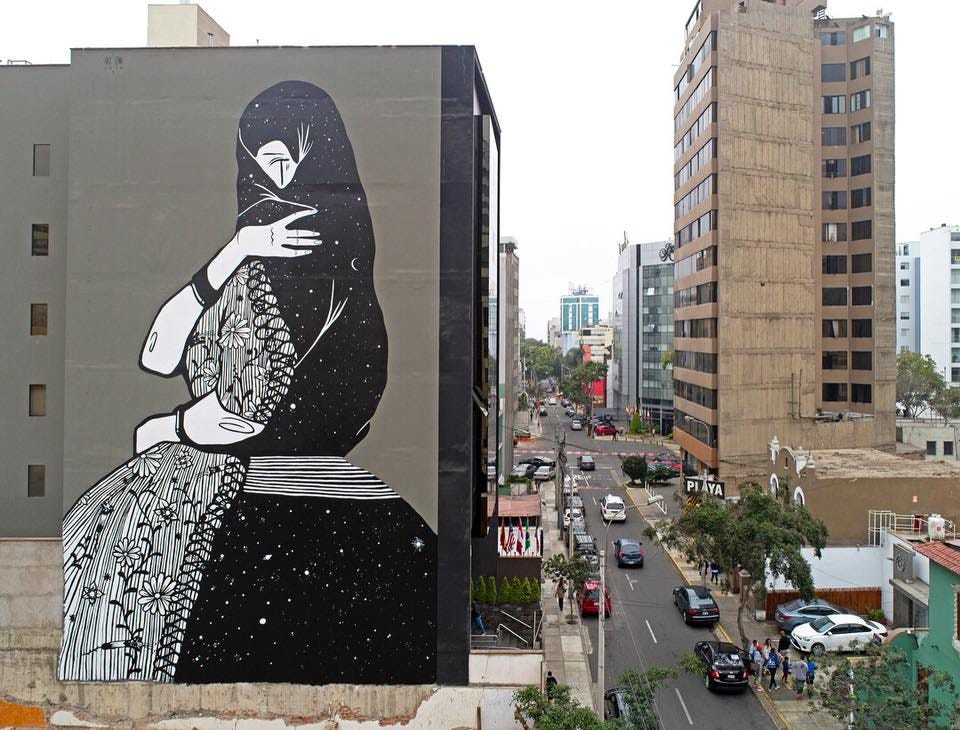
Love this, and had a fantastic time clicking through the Pancho Fierro art as well!! Great write up 💗💗
This was a fascinating read!